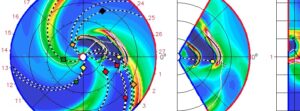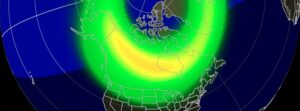Solar radiation storm, CME produced by M4.2 flare expected to hit Earth on May 11
High solar activity was observed on May 10, 2023, primarily due to the enhanced flare potential of Region 3296. The most significant event from the region was an M4.2 flare, which resulted in a well-defined partial halo Coronal Mass Ejection (CME) signature, expected to hit Earth sometime after 18:00 UTC on May 11. The 10 MeV proton flux peaked at 38 pfu, dropped below Minor – S1 solar radiation storm levels by 12:35 UTC on May 9, but still above average, and then rose back over the 10 pfu threshold due to the May 7 CME passage.




